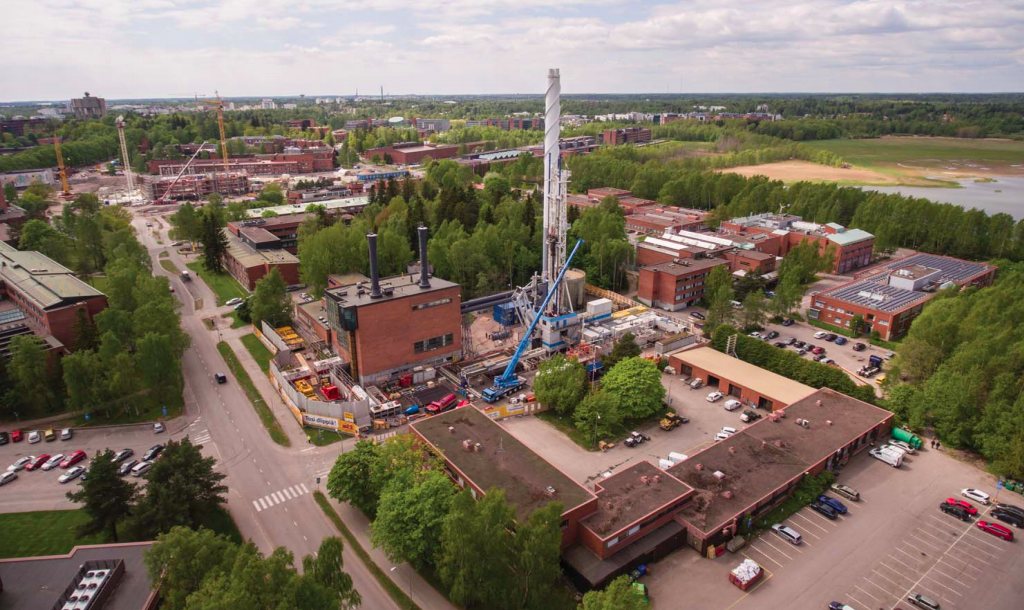Finnish geothermal pilot project in Espoo on track to deliver heat in October 2020
With the final drilling concluded, the St1 geothermal heating pilot project in Otaniemi, Espoo in Finland is on track to deliver sustainable geothermal heat to the district heating system in October 2020.
In a statement published this week, Finnish St1 announces that it has completed the final phase of drilling for the St1 geothermal pilot heating plant in Otaniemi in March and two geothermal wells extending to a depth of more than 6 km are now ready.
The water conducted between them, which naturally heats in the bedrock, is utilized in the production of district heating when the plant is completed. The plant’s heat production is routed through heat exchangers directly to Fortum’s district heating network and can cover up to 10% of the district heating needed in Espoo. The target schedule for the start of commissioning of the Otaniemi geothermal heating plant is October 2020.
Geothermal heat production that utilizes the heat of the rock bed is a new, emission-free form of energy production in Finland. It can significantly reduce not only CO2 emissions, but also small particulate emissions from traditional heat production from combustion – that is, improve urban air quality.
Now the Otaniemi geothermal pilot project has progressed to the finalization of the thermal wells. First, hydraulic tests are performed, on the basis of which the so-called the need for counter-stimulation. In practice, counter-stimulation means that water is pumped into another deep heat well. This ensures that the water supplied to the system flows as well as possible in the rock crevices between the wells. Any counter-stimulation would begin in early May and last for about two weeks.
In the surrounding areas, noise nuisance is possible in the coming weeks
The effects of the measures are closely monitored in co-operation with the Institute of Seismology of the University of Helsinki. A monitoring system has been set up for the project, which will enable hydraulic tests and stimulation to be carried out in a very controlled manner – without endangering people or property. A measurement network installed deep in the rock is used to monitor both the flow of water and the micro-shocks that the work steps are likely to cause deep in the bedrock. Micro-shocks may cause momentary sounds on the ground in nearby areas. Sound waves can also resonate in windows and structures, but they do not pose a danger to people or damage structures. Potential micro-earthquakes can occur at different times of the day with hydraulic tests, possible counter-stimulation and preparatory work in progress between weeks 17-20.
“We apologize in advance for any noise nuisance caused by micro-earthquakes that may occur to residents of the area during the finalization phase of the heat wells. This is an important, but time-limited, step in a unique project that, if successful, could revolutionize the way heat is produced in the Nordic countries and Europe more broadly, ie enable zero-emission district heating production, ”says Matti Pentti, Director of St1’s Geothermal Unit.
For more information, here the project’s website.
Source: St1


















